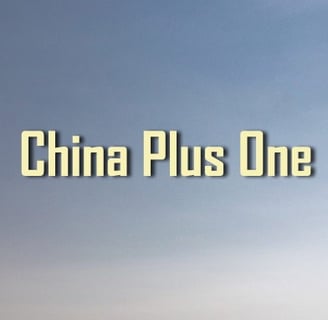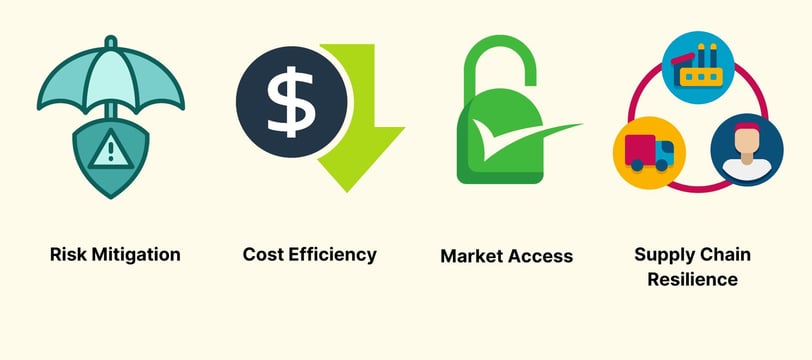Introduction to the China Plus One Strategy: Diversify to Thrive
C+1 Strategy, Global Expansion: Why China Plus one is the Future
Anwar Pirzada Founder at Harmony Sourcing
8/14/20242 min read


Understanding the China Plus One Strategy: A Path to Diversified Manufacturing
Introduction: In today’s rapidly evolving global business landscape, companies are constantly seeking ways to enhance their resilience and sustainability. One strategy that has gained significant traction is the China Plus One strategy. This approach involves diversifying manufacturing and supply chain operations beyond China to other countries. Let’s delve into what this strategy entails and why it has become a crucial consideration for businesses worldwide.


What is the China Plus One Strategy?
The China Plus One strategy is a business approach where companies establish additional manufacturing bases outside of China. While China remains a dominant player in global manufacturing, businesses are increasingly looking to mitigate risks associated with over-reliance on a single country. By diversifying their operations, companies can better manage geopolitical tensions, rising labor costs, and supply chain disruptions.
Why Adopt the China Plus One Strategy?
Risk Mitigation: Diversifying manufacturing locations helps companies reduce the impact of political instability, trade wars, and other geopolitical risks.
Cost Efficiency: Countries like Vietnam, India, and Thailand offer lower labor costs compared to China, making them attractive alternatives for manufacturing.
Market Access: Expanding into new markets allows companies to tap into different consumer bases and reduce the impact of any single market’s downturn.
Supply Chain Resilience: By spreading operations across multiple countries, businesses can build more resilient supply chains, reducing the risk of disruptions.


Examples of the China Plus One Strategy in Action:
Apple Inc.: Apple has gradually shifted some of its manufacturing operations to countries like India and Vietnam to diversify its supply chain and reduce dependency on China.
Samsung Electronics: Samsung has expanded its manufacturing footprint to countries like Vietnam, where it produces a significant portion of its smartphones.
Nike: Nike has diversified its production by establishing manufacturing facilities in countries like Indonesia and Vietnam, in addition to China.
Conclusion: The China Plus One strategy is not about abandoning China but rather about creating a more balanced and resilient manufacturing network. By diversifying their operations, companies can better navigate the complexities of the global market and ensure long-term sustainability. As businesses continue to adapt to changing dynamics, the China Plus One strategy will likely play a crucial role in shaping the future of global manufacturing.
Address
Westgate by True Value
B Block-22nd Floor, Near YMCA Club, SG Highway, Ahmedabad - 380051
Contacts
+91 910-600-3945
Contact@harmonysourcing.com
